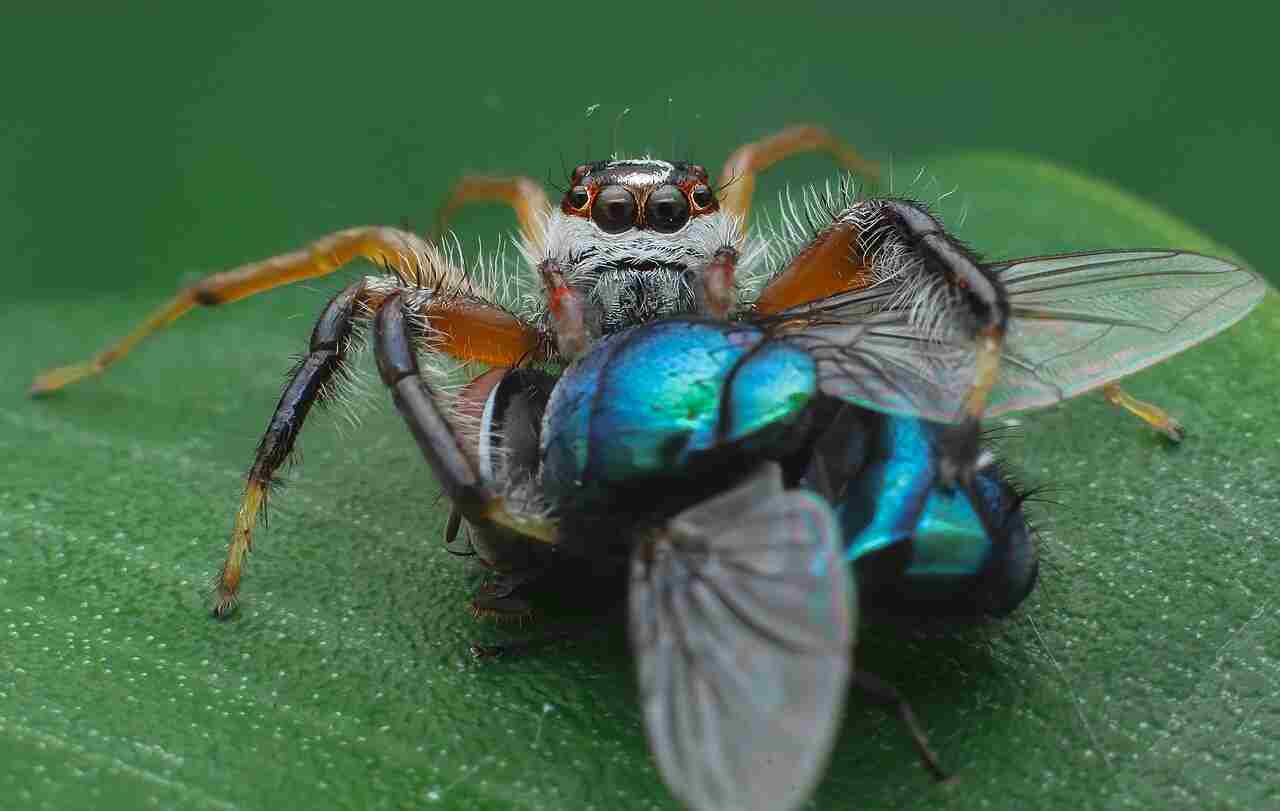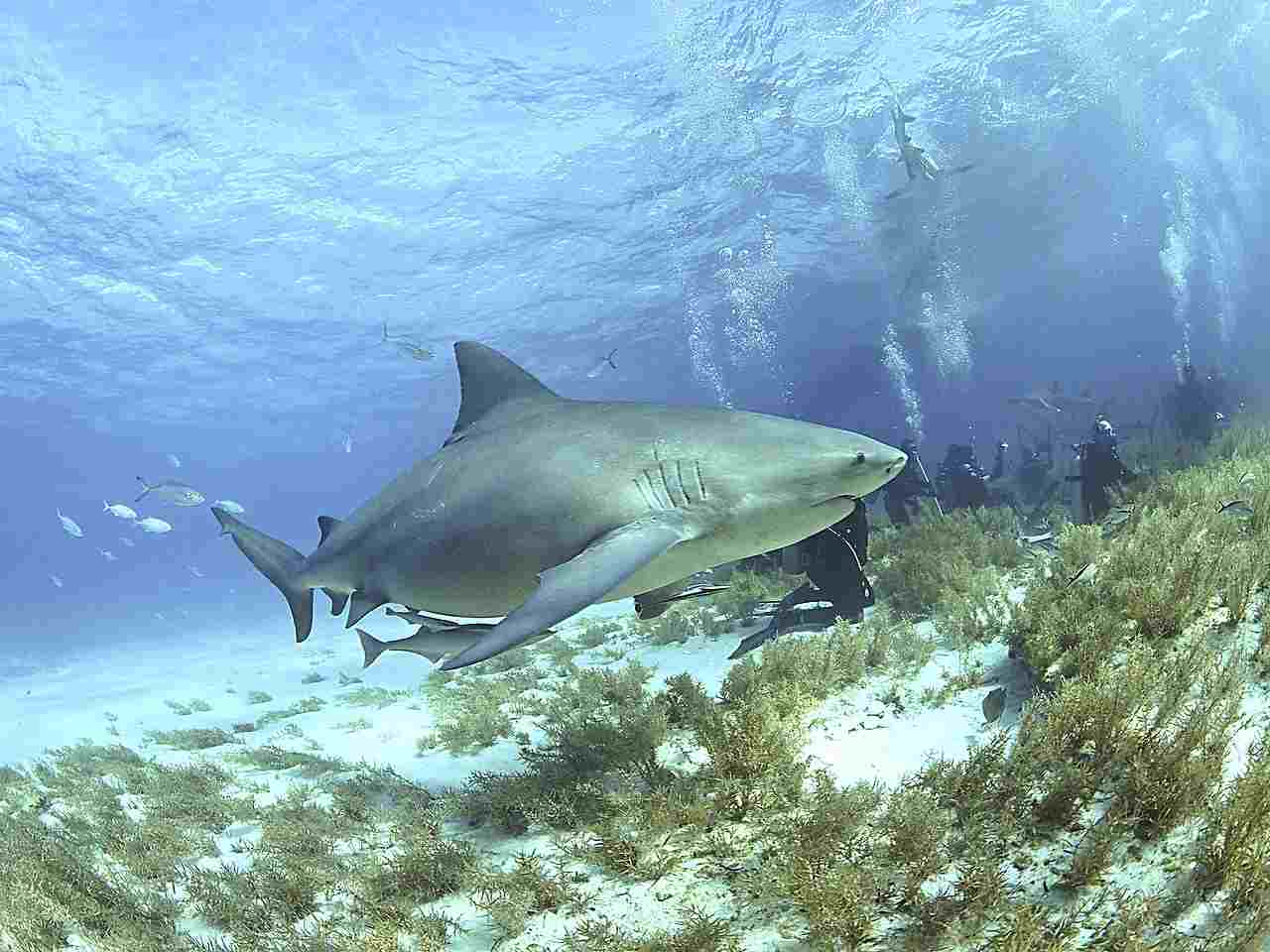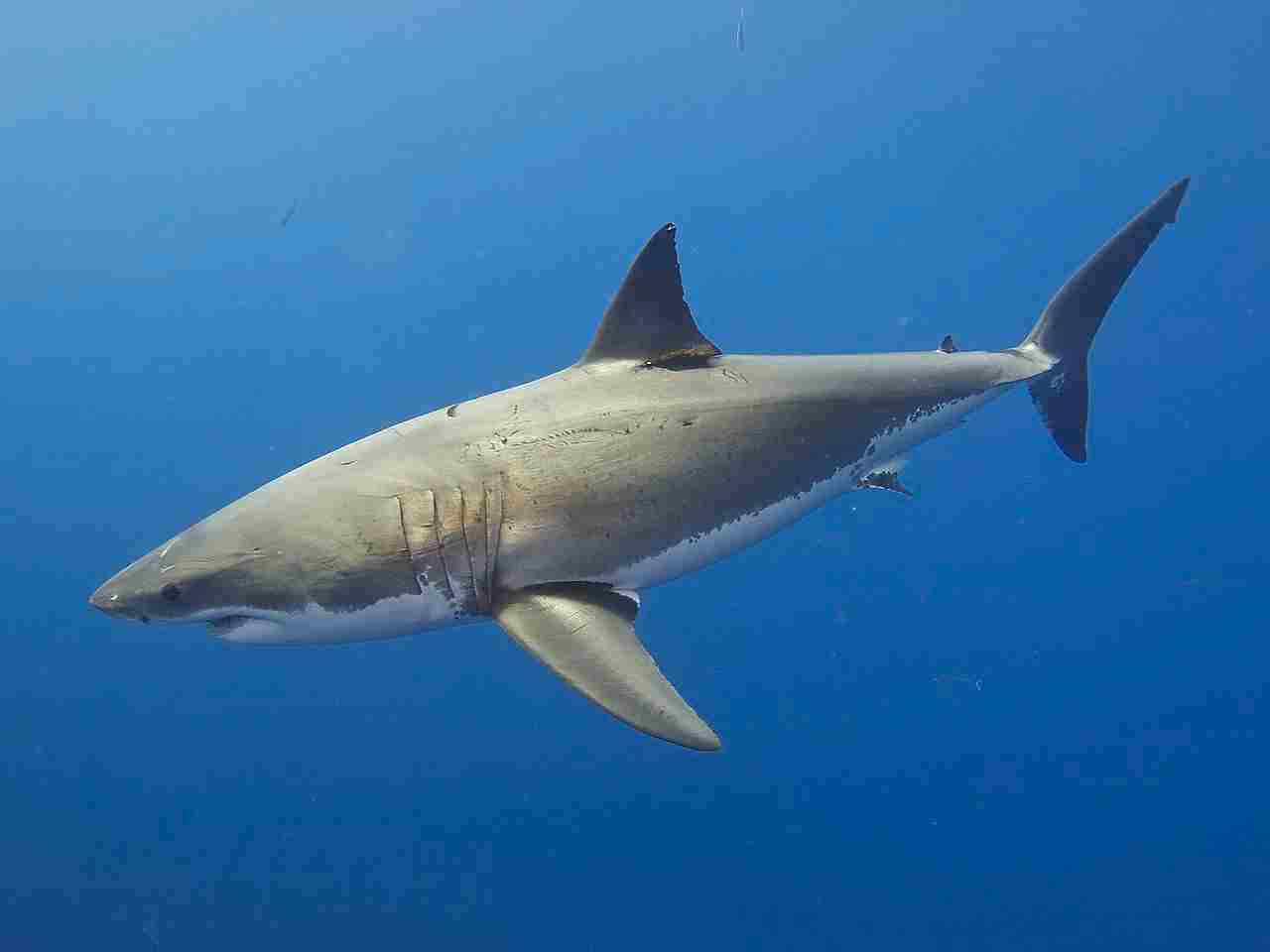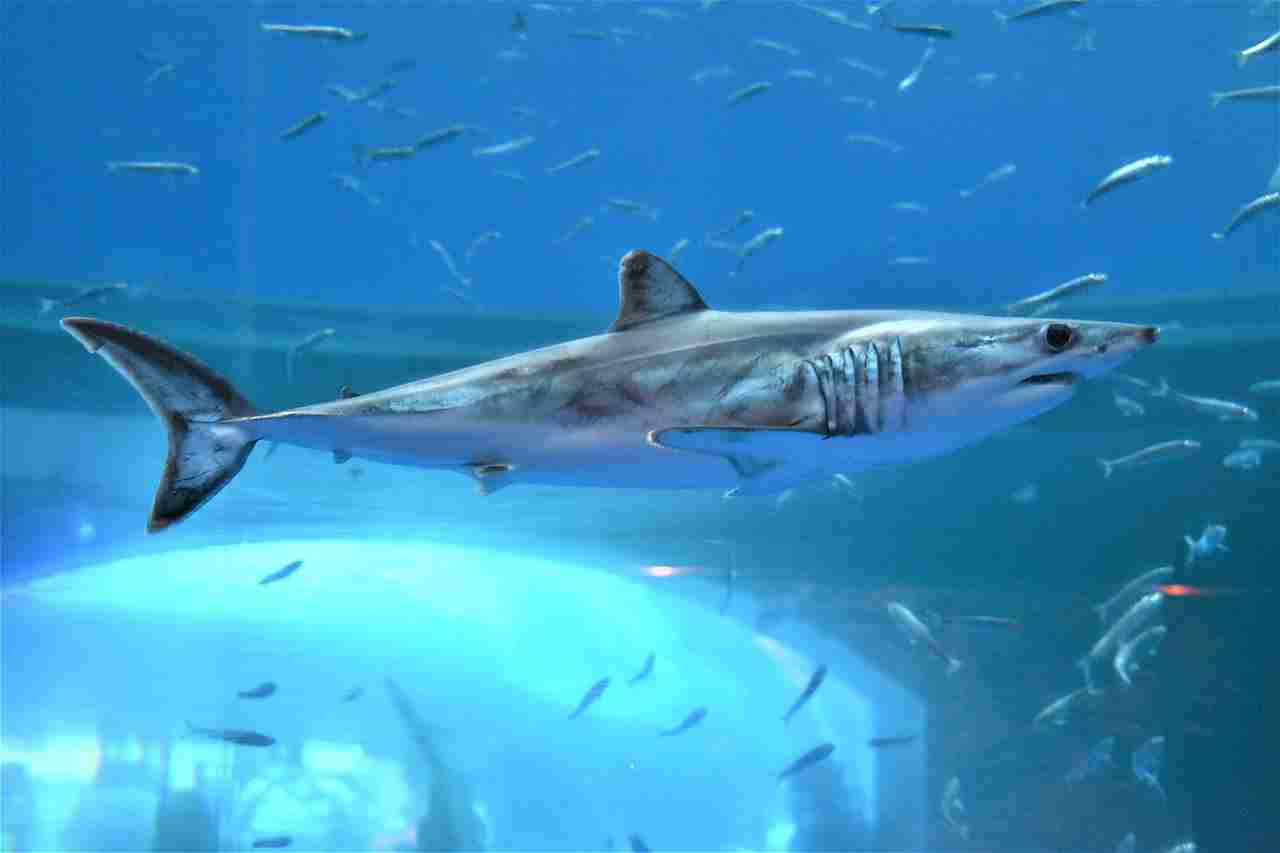Why Are There No Dangerous Animals In New Zealand? Answered
It is not true that there are no dangerous animals in New Zealand; rather, there are relatively few dangerous animals, such as various venomous spiders, snakes, sharks, and marine creatures with potentially harmful characteristics. Some pose risks through venomous bites or stings, while others, like sharks and barracudas, can cause physical injury through bites. While the likelihood of encountering these animals is low, it is always essential to exercise caution and follow safety guidelines when exploring New Zealand’s natural environments to reduce risks.
1. White-Tailed Spider
The white-tailed spider is a common arachnid in New Zealand, known for its distinctive white tail markings. While not generally aggressive, these spiders can bite if threatened or provoked. Their bites may cause pain, swelling, and in rare cases, a localized skin reaction that can resemble necrosis. However, severe outcomes from white-tailed spider bites are uncommon. They typically inhabit dark, moist places such as under logs, in gardens, or inside homes, often seeking shelter in clothing or bedding. While alarming, their bites are not usually life-threatening, and proper medical attention can manage any adverse effects.
2. Katipo Spider
The katipo spider is a small, highly venomous spider native to New Zealand’s coastal regions. It is closely related to the black widow spider, with distinct red markings on its abdomen. Although bites are rare due to the spider’s reclusive nature, they can result in serious symptoms like severe pain, sweating, and muscle cramps. The katipo’s population is limited, and it is considered an endangered species. Encounters typically occur in sandy, coastal habitats, and people are advised to avoid disturbing the spider’s natural environment to prevent bites and support its conservation.
3. Redback Spider

The redback spider is an invasive species in New Zealand, closely related to the Australian variety. It is characterized by a distinctive red stripe on its back and is known for its venomous bite. Bites can cause severe pain, nausea, and muscle weakness, potentially requiring medical treatment, including antivenom. Redback spiders are found in urban areas, often in sheltered spaces such as garden sheds, mailboxes, and under outdoor furniture. Caution should be exercised when reaching into dark, hidden spaces to avoid accidental bites.
4. Black Widow Spider
The black widow spider, a globally notorious venomous spider, can occasionally be found in New Zealand. Recognizable by its shiny black body and red hourglass marking on the abdomen, it poses a significant threat to humans if bitten. Symptoms of a black widow bite can include intense pain, muscle cramps, and nausea, with severe cases requiring antivenom. Though sightings in New Zealand are rare, these spiders are usually found in secluded, sheltered locations. It’s crucial to exercise caution and wear protective clothing when exploring potential spider habitats.
5. Yellow Sac Spider
The yellow sac spider is a common spider in New Zealand, known for its pale yellow to light green coloration and habit of building small silken sacs to hide in during the day. Though not as venomous as other spiders, the yellow sac spider’s bite can cause painful localized reactions, swelling, and redness. These spiders often venture indoors and can be found in corners, under furniture, or within clothing. While their bites are generally not life-threatening, they can be uncomfortable, and care should be taken to avoid disturbing their hiding spots.
6. Sea Snake
Sea snakes are extremely venomous reptiles found in warm ocean waters, but their presence in New Zealand is rare. They are characterized by their elongated bodies and flattened tails, adapted for swimming. Although highly toxic, sea snakes are generally not aggressive and rarely pose a threat to humans unless provoked or handled. Despite their rarity in New Zealand, if encountered, they should be given a wide berth and not disturbed. In case of a bite, immediate medical attention is crucial due to the potency of their venom.
7. Portuguese Man o’ War
The Portuguese Man o’ War is a venomous marine hydrozoan commonly found in New Zealand’s coastal waters. It resembles a jellyfish but is actually a colony of organisms working together. Its long tentacles contain venomous nematocysts, which can deliver painful stings to swimmers or beachgoers. Stings can cause intense pain, welts, and, in severe cases, breathing difficulties or heart irregularities. If stung by a Portuguese Man o’ War, immediate medical attention is recommended. These creatures can drift close to shore, and caution should be exercised when swimming in areas where they are known to be present.
8. Bluebottle Jellyfish
The bluebottle jellyfish, also known as the Pacific Man o’ War, is commonly found in New Zealand waters. It is a relative of the Portuguese Man o’ War and has similar stinging tentacles that can cause painful injuries to swimmers. Stings from the bluebottle jellyfish can lead to sharp pain, welts, and swelling, with more severe reactions possible in sensitive individuals. These jellyfish often wash up on beaches, and their tentacles can remain venomous even after separation from the main body. If stung, it’s best to rinse the area with vinegar or seawater, not freshwater, and seek medical assistance if symptoms persist or worsen.
9. Stingray
Stingrays are common in New Zealand’s coastal waters and are generally harmless to humans unless provoked or accidentally stepped on. These flat-bodied fish have a venomous barb on their tails, which they use for defense. If stung, the wound can be excruciatingly painful and may require medical attention to ensure no barb fragments remain. Stingrays usually dwell on sandy ocean floors, where they can be easily disturbed by unsuspecting swimmers. To avoid stings, it’s advisable to shuffle your feet when wading through shallow water to alert stingrays to your presence.
10. Sea Urchin
Sea urchins are spiny marine animals found in New Zealand’s coastal waters, often inhabiting rocky reefs and tidal pools. While they are not inherently aggressive, their sharp spines can cause painful puncture wounds if stepped on or touched. Some species of sea urchins have venomous spines that can result in more severe pain, swelling, and infection. If punctured by a sea urchin, it’s important to remove any spines carefully and disinfect the area to prevent infection. Wearing protective footwear when exploring rocky shores can help reduce the risk of injury.
11. Stonefish
The stonefish is considered one of the most venomous fish in the world and is occasionally found in New Zealand waters. It is highly camouflaged, resembling a rock or piece of coral, making it easy to overlook. The stonefish has venomous spines along its back, which can deliver a potent sting if stepped on or touched. Stonefish stings are excruciatingly painful and can cause severe symptoms, including paralysis, heart failure, or even death if not treated promptly. Immediate medical attention is crucial in the event of a stonefish sting, and wearing protective footwear in rocky coastal areas can help reduce the risk.
12. Lionfish
Lionfish are strikingly beautiful but highly venomous fish found in some New Zealand coastal regions. Their distinctive long spines contain venom that can cause intense pain, swelling, and even systemic reactions when touched or stepped on. Lionfish are generally not aggressive but can pose a risk to divers and snorkelers if they accidentally come into contact with their spines. If stung by a lionfish, it’s important to seek immediate medical attention to manage the pain and prevent complications. When exploring coral reefs or other lionfish habitats, divers should exercise caution and maintain a safe distance from these fish.
13. Cone Snail
Cone snails are beautiful yet highly venomous marine creatures occasionally found in New Zealand’s coastal waters. These snails have a specialized tooth, or radula, that can inject venom capable of paralyzing their prey. For humans, a cone snail sting can range from mild irritation to severe pain, paralysis, or even death, depending on the species and the dose of venom. If stung, immediate medical attention is required due to the high risk of respiratory failure or other serious complications. When exploring tidal pools or handling shells, it’s crucial to exercise caution to avoid these dangerous snails.
14. Moray Eel
Moray eels are large, snake-like fish commonly found in New Zealand’s coastal waters, particularly around coral reefs and rocky outcrops. Although they are not venomous, their powerful jaws and sharp teeth can cause serious injury if they bite. Moray eels are generally shy and will not attack unless provoked or threatened. Divers and snorkelers should be cautious when exploring crevices and other hiding spots where moray eels might reside. If bitten by a moray eel, medical attention is essential to treat potential infections and deep tissue damage. Avoid reaching into dark crevices to prevent unwanted encounters with these eels.
15. Blue-Ringed Octopus
The blue-ringed octopus is a small but extremely venomous creature found in New Zealand’s coastal regions. Known for its striking blue rings that appear when threatened, this octopus carries a potent neurotoxin that can cause paralysis and respiratory failure in humans. Though not aggressive, it can deliver a potentially deadly bite if handled or provoked. Immediate medical attention is critical in case of a blue-ringed octopus bite, as there is no known antivenom, and supportive care is required to prevent fatal complications. Divers and beachgoers should avoid handling or disturbing these octopuses to minimize the risk of a dangerous encounter.
16. Crown-of-Thorns Starfish
The crown-of-thorns starfish is a large, spiny starfish found in New Zealand’s coastal waters. It has long, venomous spines that can cause painful puncture wounds if touched. These starfish are primarily coral predators and can inflict significant damage to coral reefs. A crown-of-thorns starfish sting can result in intense pain, swelling, and potential infection. If stung, it’s important to remove any spines carefully and clean the wound to prevent infection. These starfish can be dangerous to divers and should be avoided.
17. Barracuda
Barracudas are aggressive predatory fish found in New Zealand’s coastal waters. They have elongated bodies and sharp teeth, allowing them to be swift and efficient hunters. Although attacks on humans are rare, barracudas can be aggressive if provoked or if they mistake a diver’s shiny objects for prey. If bitten by a barracuda, immediate medical attention is needed to manage deep cuts and potential infections. Divers and snorkelers should exercise caution and avoid wearing reflective jewelry to reduce the risk of attracting barracudas.
18. Mako Shark
The mako shark is a powerful and fast shark species occasionally found in New Zealand waters. Known for their speed and agility, mako sharks are formidable predators, primarily feeding on fish and other marine creatures. While not typically a threat to humans, mako sharks can be dangerous if provoked or if they mistake humans for prey. Swimmers and divers should exercise caution and respect in areas where mako sharks are known to inhabit. If attacked, immediate medical assistance is crucial to treat potential bite wounds and shock.
19. Great White Shark
The great white shark is one of the most feared predators in the ocean, occasionally seen in New Zealand waters. These large sharks are known for their size, strength, and predatory instincts. Although great white shark attacks on humans are rare, they can be fatal due to the shark’s powerful jaws and sharp teeth. Swimmers, surfers, and divers should be cautious in areas where great white sharks are known to roam. It’s essential to follow local safety guidelines and shark warnings to minimize the risk of an encounter with these apex predators.
20. Bronze Whaler Shark
The bronze whaler shark is a large shark species found in New Zealand waters. It is known for its bronze coloration and preference for coastal habitats. While not as aggressive as other sharks, bronze whaler sharks can pose a threat to humans if provoked or if they mistake a human for prey. They are often seen in bays and shallow waters, making them a potential risk to swimmers and surfers. If bitten by a bronze whaler shark, immediate medical attention is necessary to treat bite wounds and prevent shock.
21. Bull Shark
The bull shark is a large and aggressive shark species occasionally found in New Zealand’s coastal waters. Known for their stocky build and territorial behavior, bull sharks can pose a significant threat to humans. They often inhabit shallow waters and can venture into rivers, increasing the likelihood of encounters with swimmers and surfers. Bull shark attacks on humans, while rare, can be severe due to their size and strength. If attacked, immediate medical assistance is crucial to manage injuries and prevent severe complications.
22. Tiger Shark
The tiger shark is a large, predatory shark species found in New Zealand’s coastal waters. Known for their distinctive stripes and voracious appetite, tiger sharks can be aggressive and unpredictable. They are capable of eating a wide variety of prey, including fish, birds, and other sharks. Tiger shark attacks on humans are relatively rare but can be fatal due to the shark’s size and power. Swimmers and surfers should exercise caution in areas where tiger sharks are known to be present, following safety guidelines to minimize the risk of an encounter.
23. Electric Ray
The electric ray is a unique marine creature found in New Zealand waters, known for its ability to generate electric shocks. These rays use electric currents to stun prey and defend against predators. While electric rays are not typically aggressive toward humans, they can deliver powerful shocks if touched or stepped on. A shock from an electric ray can cause pain, numbness, or temporary paralysis. Swimmers and divers should avoid disturbing these rays to prevent shocks and should seek medical attention if shocked to ensure no complications arise.
24. Oceanic Whitetip Shark
The oceanic whitetip shark is a large pelagic shark species occasionally found in New Zealand waters. Known for their rounded dorsal fins with white tips, these sharks are typically found in open ocean environments. While generally not aggressive, they can become curious and potentially dangerous if food is involved. Oceanic whitetip sharks are responsible for some of the most notorious attacks on shipwreck survivors. Swimmers and divers should exercise caution and avoid carrying food or shiny objects that might attract these sharks. If bitten or attacked, immediate medical attention is necessary.
| Animal | Characteristics |
| White-Tailed Spider |
Can bite if provoked, causing pain and swelling; typically found in moist, dark places.
|
| Katipo Spider |
Endangered venomous spider with red markings; bites can cause severe symptoms.
|
| Redback Spider |
Venomous with a distinctive red stripe; bites can be painful and require medical attention.
|
| Black Widow Spider |
Recognizable by its shiny black body and red hourglass; bites can be severe.
|
| Yellow Sac Spider |
Pale yellow; bites can cause localized pain and swelling.
|
| Sea Snake |
Extremely venomous, but rare; bites require immediate medical attention.
|
| Portuguese Man o’ War |
Marine hydrozoan with venomous tentacles; stings can cause intense pain and other symptoms.
|
| Bluebottle Jellyfish |
Relative of the Portuguese Man o’ War; stings can be painful and cause swelling.
|
| Stingray |
Venomous barb on the tail; stings can be painful and require medical attention.
|
| Sea Urchin |
Spiny marine animal; spines can cause puncture wounds and potential infection.
|
| Stonefish |
Highly venomous; stings are extremely painful and can be life-threatening.
|
| Lionfish |
Venomous spines; stings can cause severe pain and swelling.
|
| Cone Snail |
Beautiful but highly venomous; stings can cause paralysis and require immediate medical attention.
|
| Moray Eel |
Large and aggressive; bites can cause deep tissue damage and infection.
|
| Blue-Ringed Octopus |
Small and venomous; bites can cause paralysis and require immediate medical attention.
|
| Crown-of-Thorns Starfish |
Venomous spines; stings can cause pain and swelling.
|
| Barracuda |
Aggressive predatory fish; bites can cause deep cuts and require medical attention.
|
| Mako Shark |
Fast and powerful shark; attacks are rare but can be severe.
|
| Great White Shark |
Feared predator; attacks on humans are rare but can be fatal.
|
| Bronze Whaler Shark |
Large shark; bites can cause significant injury and require medical attention.
|
| Bull Shark |
Large and aggressive shark; attacks are rare but can be severe.
|
| Tiger Shark |
Large predatory shark; can be aggressive and unpredictable.
|
| Electric Ray |
Can generate electric shocks; shocks can cause pain and numbness.
|
| Oceanic Whitetip Shark |
Large pelagic shark; can become dangerous if food is involved.
|











